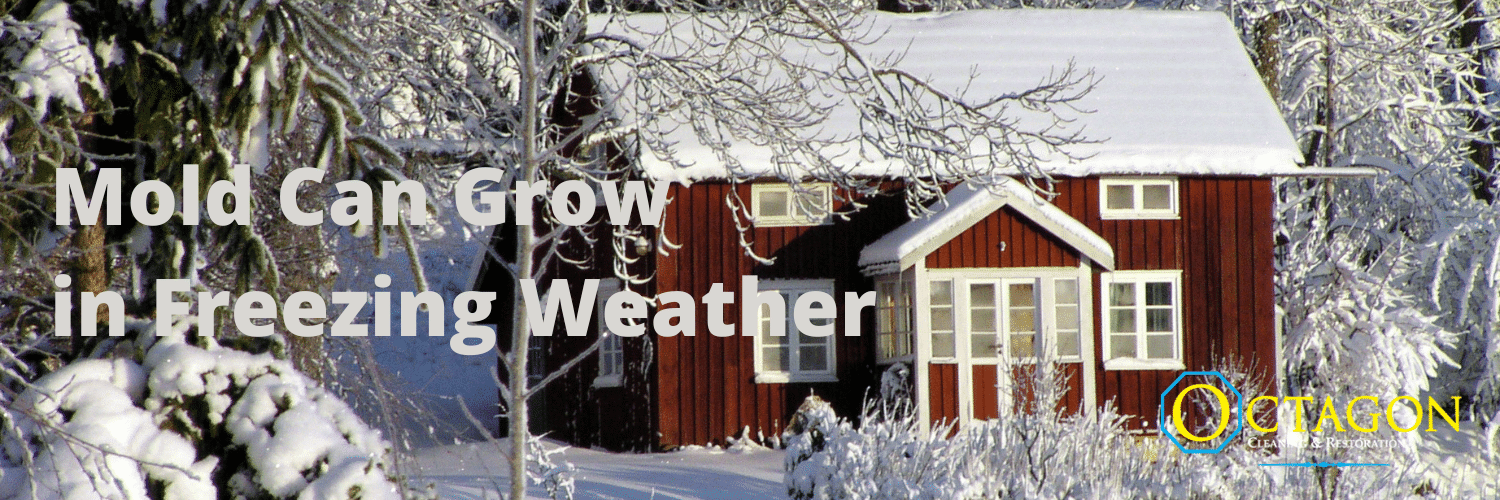
You might find it surprising that despite the cold weather that winter brings to Maine, it doesn’t mean mold growth stops. Mold will always flourish in a warm, moist environment with organic materials, and the inside of a home can offer that year-round! Freezing and dry weather will unfortunately not stop it from happening.
Reducing Ventilation Increases the Chances for Mold to Grow
We all spend some time in the fall prepping our homes for winter, which includes getting everything sealed up nice and tight. Our windows and doors remain closed, and you might add more insulation. This is all great for keeping the heat in, but consider that this means there is also very little air going out. Ventilation is reduced so moisture can be trapped inside.
Leaking pipes or cracked foundations are very clear sources, but we’re also introducing moisture through showering, cooking, and even breathing!
Get in Control of Moisture
Luckily, moisture is something you are absolutely in control of, and keeping it managed is one of the easiest ways to prevent microbial growth.
Where Does Mold Grow and What Can I Do to Prevent It?
Some common locations of mold growth in the winter include windows, walls/wallpaper, and insulation behind walls, to name just a few. This is simply because condensation is likely to build up in these areas more than in others. To reduce moisture in your living space, you can do a few things:
- Shorten your showers, or take cooler ones
- Utilize kitchen and bath fans to route humid air outside
- Investing in a dehumidifier – something beneficial year-round – is a very simple solution designed to remove moisture from the air. Note that the humidity levels inside your home should never be higher than 55%.
- Plants should be in a well-ventilated area and damp towels/clothes – don’t let them sit!
On top of controlling moisture in these spots, you should also focus on keeping them nice and clean. Frequently wipe down and clean areas that may have water building up. Spring isn’t the only time to deep clean those forgotten areas! Speaking of forgotten areas – most of us will stow away clothes and outdoor gear when summer ends. Be sure they are stored in dry areas, such as a plastic tub that seals. That way, these items are protected if any moisture builds up or if you are to have a flood.
Looking Out for Ice Dams
On the topic of moisture build-up, let’s discuss ice dams. An ice dam is a chunk of ice that will form along the roof’s edges. In solid form, it’s not a problem, but once it begins melting, you might have some issues. The water pools up, then refreezes and traps water in. Water is then able to pass through roofing and drip into the attic. These typically form on most roofs’ edges, depending on the style. Keep an eye out for water stains in the attic, and monitor the icicles that build up on the roof as well. Ensure the ceilings below your attic are insulated to prevent warm air from rising and causing further melting.
How to Prevent Mold From Growing in Your Home
The recipe for a happy, healthy home in the winter is not complicated; it just takes some planning and awareness. Proper prevention is far less of a pain than remediation. If you find yourself in a situation where mold growth has already begun or you’ve discovered water damage, it should be addressed as soon as possible. Octagon Cleaning and Restoration is proud to offer free inspections to mitigate these issues.

